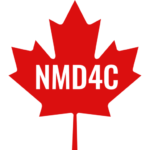Ian Smith
Biography
Dr. Ian Smith is a Clinical Research Associate at the Ottawa Hospital Research Institute in Ottawa, Canada. He completed his PhD in Dr. Russell Tupling’s lab at the University of Waterloo where he investigated calcium signaling in muscle contraction. He spent the next several years performing multiscale investigations of neuromuscular contractile function as a postdoctoral fellow in Dr. Walter Herzog’s lab at the University of Calgary. He is currently leading multiple translational research projects in a wide variety of neuromuscular conditions at The Ottawa Hospital’s NeuroMuscular Centre, including work on the CIHR-funded BIND Study: Assessing the Indirect Socio-Economic Burden of Inherited Neuromuscular Diseases. The goal of this work is to facilitate rare disease diagnosis, develop more effective monitoring of neuromuscular disease progression and treatment response.
Read Dr. Ian Smith’s Early-Career Blog
Recent Publications
Joumaa V, Smith IC, Fukutani A, Leonard TR, Ma W, Mijailovich SM, Irving TC, Herzog W. (2021) Effect of Active Lengthening and Shortening on Small-Angle X-ray Reflections in Skinned Skeletal Muscle Fibres. International Journal of Molecular Sciences 22 (16), 8526. PMID: 34445232
Smith IC, Ostertag C, O'Reilly JJ, Rios JL, Klancic T, MacDonald GZ, Collins KH, Reimer RA, Herzog W. (2021) Contractility of permeabilized rat vastus intermedius muscle fibres following high-fat, high-sucrose diet consumption. Applied Physiology, Nutrition, and Metabolism. 46(11): 1389-1399. PMID: 34139131
Smith IC, Onasch F, Kryściak K, Celichowski J, Herzog W. (2021) Contractile history affects sag and boost properties of unfused tetanic contractions in human quadriceps muscles. European Journal of Applied Physiology 121, 645-658. PMID: 33221935
Smith IC, Collao N, Herzog W. (2020) The effects of inorganic phosphate on contractile function of slow skeletal muscle fibres are length-dependent. Biochemical and Biophysical Research Communications 533 (4), 818-823. PMID: 32993963

